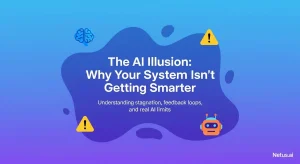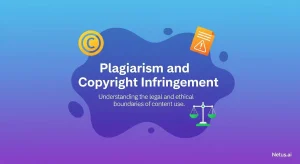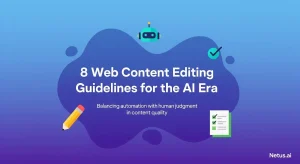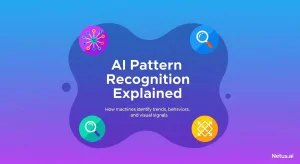All You Need to Know About Plagiarism in Coding: A Comprehensive Guide
Ashley Merit
Content writer and editor for Netus.AI
Table of Contents
All You Need to Know About Plagiarism in Coding. The prevalence of plagiarism spans across various creative works, from art and literature to music. In the world of programming, plagiarism is an issue that developers have to face. The effort put into developing a program involves extensive research and problem-solving to ensure its functionality. To streamline their efforts, programmers often rely on libraries and repositories. However, the use of these resources has inadvertently contributed to the occurrence of plagiarism in coding.
Programmers, particularly those working individually, face numerous challenges in creating and maintaining unique code. While the use of libraries and repositories can simplify the process, precautions must be taken to avoid inadvertently plagiarizing existing code. As the concerns surrounding plagiarism in coding continue to grow, it is crucial to identify the risks and learn how to mitigate them.
Key Takeaways
- Plagiarism is a prevalent issue in programming due to the utilization of libraries and repositories.
- Programmers need to be cautious when utilizing shared resources to create unique code.
- Addressing plagiarism in coding involves understanding the risks and implementing proactive strategies.
Get to Know Various Programming Languages
Computers communicate using a specific language known as binary or machine language, comprised of zeros and ones. To simplify coding, several programming languages have been developed that eventually translate to binary. These languages allow programmers to work with more comprehensive and manageable syntax.
Some widely used programming languages include:
- Python: A highly flexible language with an extensive range of libraries and packages. Python sees frequent use in various applications, notably in artificial intelligence (AI) and STEM fields.
- JavaScript: This prevalent language enables the creation of interactive elements in programs. JavaScript has a wide range of applications, including AI and other software solutions. Well-known companies like Uber, Netflix, and LinkedIn utilize JavaScript, as do games such as Candy Crush.
- C++: Often the first programming language students encounter, C++ is a powerful, object-oriented language perfect for beginners. It offers a versatile coding experience, allowing users to develop applications and games, such as Minecraft Windows 10 Edition.
These highlighted languages are just a few examples from the vast domain of programming languages. Learning multiple languages enables programmers to expand their coding skill set, contributing to diverse technology and software development projects. Many resources, such as tutorials and open-source libraries, are available to assist in learning various programming languages.
Remember that understanding different programming languages allows developers to approach complex programming challenges with more experience, ideas, and formatting options. Ultimately, exploring diverse languages enhances a programmer’s ability to design and implement innovative software solutions.
How Does Plagiarism Occur in Coding?
Plagiarism in coding takes place through various methods. A prevalent approach is when developers seek help from code repositories or forums like Stack Overflow. In educational settings, plagiarism often arises during academic assessments. Institutions expect students to maintain academic integrity by submitting original work. However, while coding at home or work, individuals are free to refer to any source material, and may copy from it, with or without attribution.
Programming plagiarism is less prevalent outside educational institutions due to the abundance of libraries and open-source code on the internet. Additionally, dedicated online communities assist new and amateur programmers. Although these communities can be helpful, students may exploit these resources. When students simply ask for and receive the desired source code online, the assessment’s purpose is undermined. The main goal of assigning projects is to evaluate students’ understanding of the subject, which may not be achieved if repositories are used excessively.
To combat plagiarism in coding, there are tools available such as MOSS (Measure of Software Similarity), Copyleaks, JPlag, and Codequiry.
To avoid plagiarism, students and developers should learn to paraphrase, ensuring that the borrowed code is substantially transformed into their own original work. Moreover, giving proper attribution when necessary can prevent accidental plagiarism and copyright infringement. Furthermore, using plagiarism detection tools and developing a deeper understanding of programming concepts can help avoid uncredited work and maintain academic integrity.
Handy Advice to Evade Plagiarism in Programming
Avoiding plagiarism is essential, as it can lead to your work being rejected. Here are a few guidelines on composing code without plagiarism while considering academic integrity, documentation, originality, and collaboration.
Utilize plagiarism checkers: Contrary to popular belief, plagiarism checkers are not exclusive to texts. Online tools can detect duplicated code, pinpointing both partial and true plagiarism. They can identify similarities even with differing variables, offering a useful method for maintaining originality.
Comprehend External Source Code Utilization: Students often struggle with this aspect. Although external repositories and libraries can be used, limitations exist. Adhere to recommended sources to ensure your code passes plagiarism detection tools, which highlight code similarity and supply the original source URL.
Reference Documentation: If copying code is permitted, cite your sources by commenting within the main file. This allows your instructor to differentiate between copied and unique code, showing attribution and respect for the original creator.
Design Your Own Code: Although generating unique solutions and rectifying errors independently might be challenging, it is a worthwhile endeavor. Successfully solving problems and fixing errors are essential components of student learning and programming mastery.
By following these suggestions, you can sidestep plagiarism in coding. Programming is time-consuming, but it presents a rewarding field with limitless opportunities.
Frequently Asked Questions
What is code plagiarism and how can one identify it?
Code plagiarism refers to the unauthorized use or copying of another person’s programming code, without providing adequate credit to the original author. It can be identified by analyzing the similarities between the source code and the suspected plagiarized code. Various machine-learning based plagiarism detection tools are available that assess coding patterns and similarities in the code to determine the level of plagiarism.
What are the repercussions for developers caught plagiarizing code?
Consequences of plagiarizing code for developers can range from academic or professional penalties, such as expulsion from educational institutions, loss of job, to potential legal ramifications depending on the licensing and copyrights associated with the original work.
How can developers avoid unintentional plagiarism while coding?
Developers can take the following precautions to prevent inadvertent plagiarism:
- Understand and adhere to the licensing and copyright requirements of any third-party code or libraries being used.
- Keep a record of the sources they use, and appropriately attribute code snippets to their original author.
- Use programming code plagiarism checker tools to verify their work before submission or publication.
What is the acceptable limit of code similarity that doesn’t signify plagiarism?
The acceptable threshold for code similarity varies based on the requirements and guidelines set by the institution or publisher. However, it is best practice to minimize similarity as much as possible and always provide proper attribution for borrowed code.
What are recommended practices for citing and reusing code to prevent plagiarism?
Developers should follow these best practices when referencing and reusing code:
- Use suitable citation methods, such as inline comments or documentation, to credit the original author.
- Understand and comply with any licensing requirements imposed by the copyright holder.
- Refactor reused code to fit the current project’s context and avoid direct copy-pasting.
How do plagiarism detection tools for programming function?
Plagiarism detection tools for programming use machine learning algorithms to analyze coding patterns and compare similarities between different code segments. These tools adapt and improve their confidence levels by learning from past data, resulting in highly accurate detection systems. An example of such a tool can be found at this HackerRank blog post.

The shortcomings of content generated by AI | NetusAI
Discover why fast, high-volume AI content often fails to deliver real results. Learn about the crucial missing feedback loop and how implementing performance tracking can transform your AI content strategy.

The illusion of AI: Your system's intelligence gap | NetusAI
Stop wasting marketing spend! Most AI tools don’t learn from results, causing content stagnation and low engagement. Discover why your generative AI isn’t getting smarter and what system actually learns and optimizes content.

Plagiarism and copyright infringement | NetusAI
Learn the distinct differences between plagiarism and copyright infringement. Understand the ethical and legal implications and get practical strategies for avoiding both academic and creative work with NetusAI.

Tips and strategies for mobile content marketing | NetusAI
Optimized for mobile-first indexing, learn 5 essential strategies to capture attention, enhance engagement and drive leads and sales with your mobile content marketing.

Web content editing guidelines for the AI era | NetusAI
Review web content editing guidelines for the AI era. Learn how to edit AI-generated content, ensure authenticity and optimize for SEO and readability.

Explaining AI pattern recognition | NetusAI
AI pattern recognition enables machines to identify trends for diverse applications, from detecting plagiarism to fraud. Discover its processes, models and real-world benefits.
